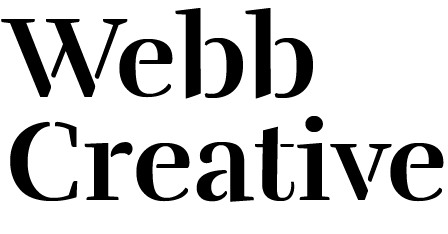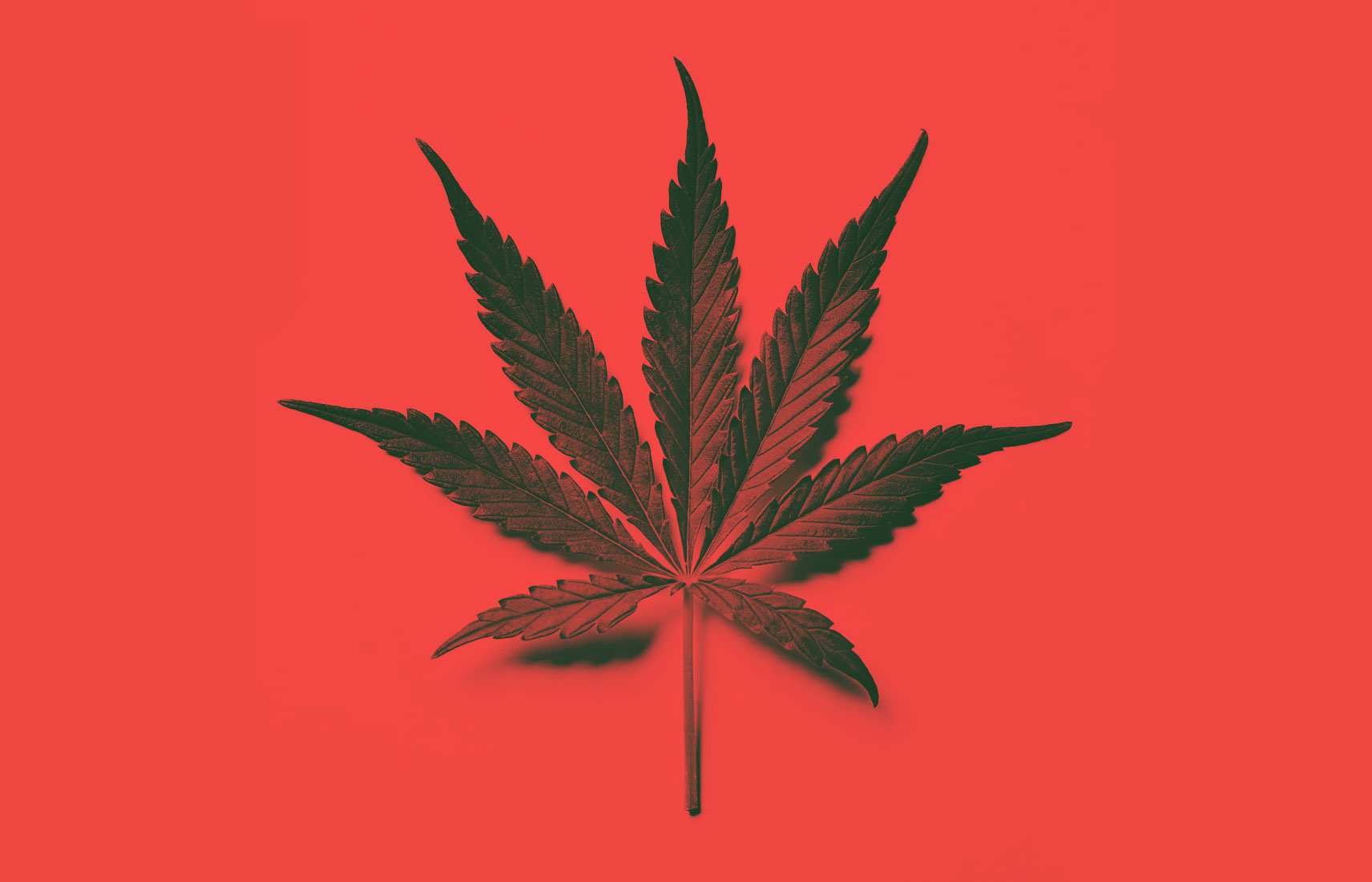
It isn’t very often that we’re able to witness the creation of an entirely new product category. However, with cannabis legalization soon becoming a reality in Canada we’ll be witnessing the birth of not only a new category, but the development of an entirely new visual language.

If comparable growing industries like cold pressed juice and craft brewing are any indication, not only will we see the development of a new visual language, but a further refinement into sub-categories defined by attributes such as potency, heritage, or cost. In fact, this has already begun to happen.
In this post we’ll identify 2 subcategories and take a look at what the current brand landscape looks like, discuss which branding strategies are working and why, and imagine how the entire industry might evolve as the market grows. We should also point out that we’re writing from a strictly Canadian perspective. With recreational cannabis already legal in multiple states, the landscape of cannabis branding in the US is vastly different. We’ve also chosen not to discuss edibles in this post as they’re not legally available in Canada at the current time, and as they sit at the intersection of food branding and cannabis branding we consider edibles a separate category. But we’ll save that for another post. 🙂
Medicinal Cannabis
The first topic we’ll discuss is medicinal cannabis, specifically Canadian Licensed Producers. These are companies that have been granted licences to grow and/or sell cannabis to patients under the Access to Cannabis for Medical Purposes Act (ACMPR) regulations in Canada. Subject to extremely vigilant oversight by Health Canada, Licensed Producers (or LPs) must follow very specific guidelines regarding the packaging, labelling, and shipment of their products. Not surprisingly, the vast majority of the LPs have invested in uncluttered, austere brands that (with varying degrees of success) would fit seamlessly on the shelves of your local pharmacy.
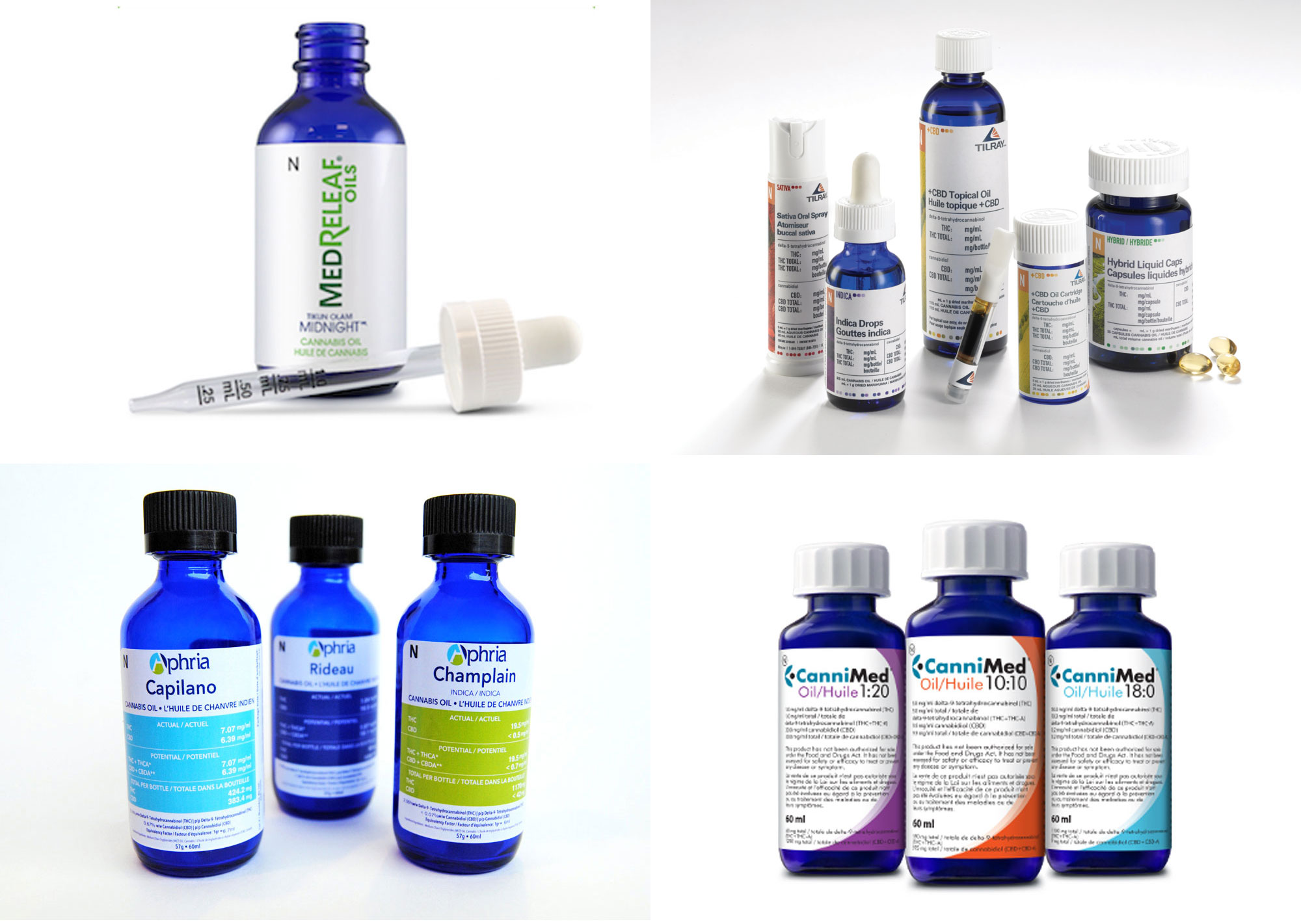

Pharmacy-grade packaging makes sense both conceptually and aesthetically, as it helps to de-stigmatize cannabis by placing it firmly within a familiar medical context. This is a design approach that builds credibility through association, while also resonating with patients who use medical cannabis as a legitimate therapy and respond poorly to it being portrayed as a recreational substance.
Although a pharmacy approach to packaging is appropriate for strictly medicinal users (and producers who want to focus solely on the medicinal market), once recreational use is legalized this approach could actually be quite limiting due to its lack of personality. The information-dense, mainly typographic labels shown below place all of the emphasis on the dosage and composition of the products, with no consideration for shelf presence or brand personality.
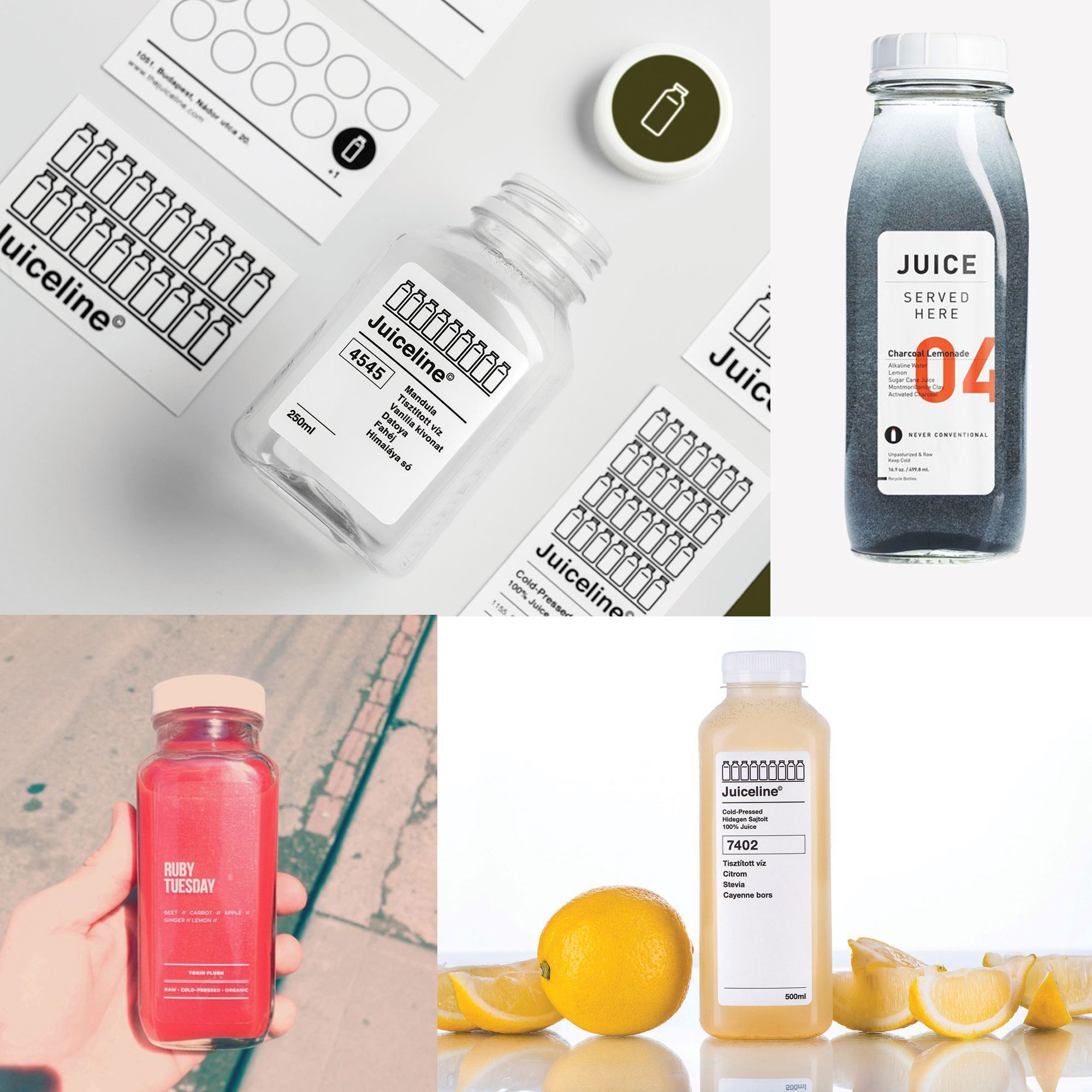
By comparison, the cold pressed juice sector is a great example of how visual cues from pharmacy packaging can be used to connote the concepts of ‘health’, ‘scientifically-proven’, and ‘consistent quality’ while still being enticing to a retail customer. While still mainly typographic, information is edited to only the essentials, and differences in type size and colour create an easily understandable information hierarchy. Slightly tounge-in-cheek copywriting is also common, and contrasts formal type treatments to make the products less imposing and more approachable.

Tweed and Hydropothecary are prime examples of licensed producers who have chosen to differentiate themselves from the medicinal market, and who appear to be preparing to pivot into a more lifestyle ‘craft’ approach once legalization passes in Canada. For example, Tweed have recently promoted their recent partnership with Snoop Dogg by purchasing ads in Times Square, and are in the process of opening a network of brick-and-mortar ‘consultation centers’ in cities across Canada. Although these centres are currently used for patient consultations and to facilitate new signups, they could easily be converted to branded storefront dispensaries once recreational cannabis is legalized.
In stark contrast to the LPs discussed above, both Tweed and Hydropothecary have created lifestyle-centered brands that have no relation to medicinal design. Tweed has essentially applied an ‘indie coffee shop’ aesthetic to medicinal cannabis, using an informal script wordmark and a minimal, yet consistent, brand language. Hydropothecary has gone in the opposite direction by offering a premium line of custom strains presented in a custom box, and tied with a bow.
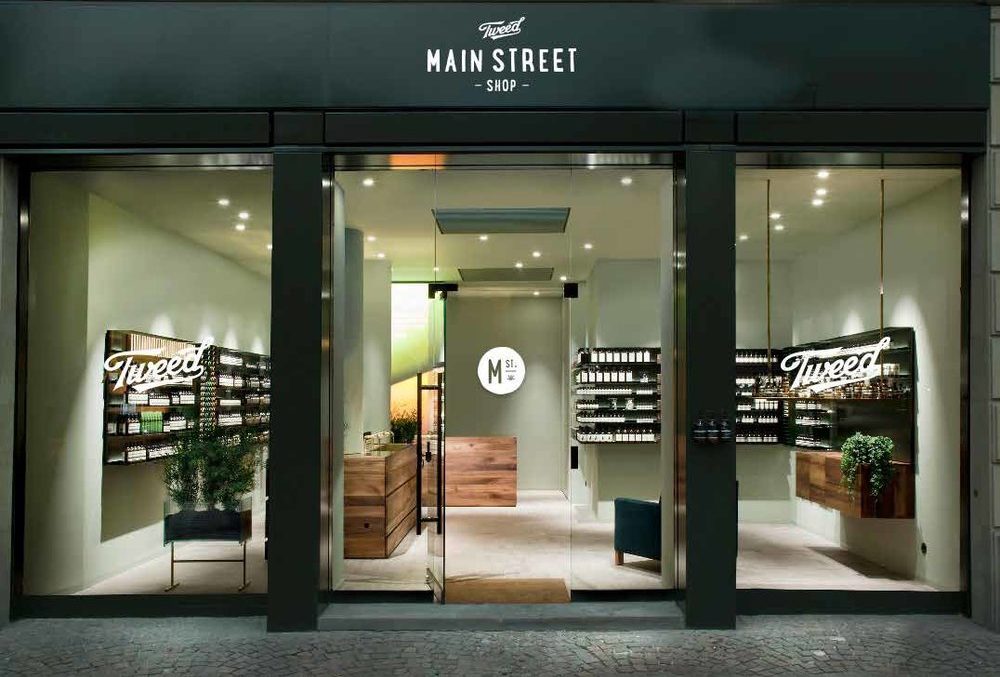
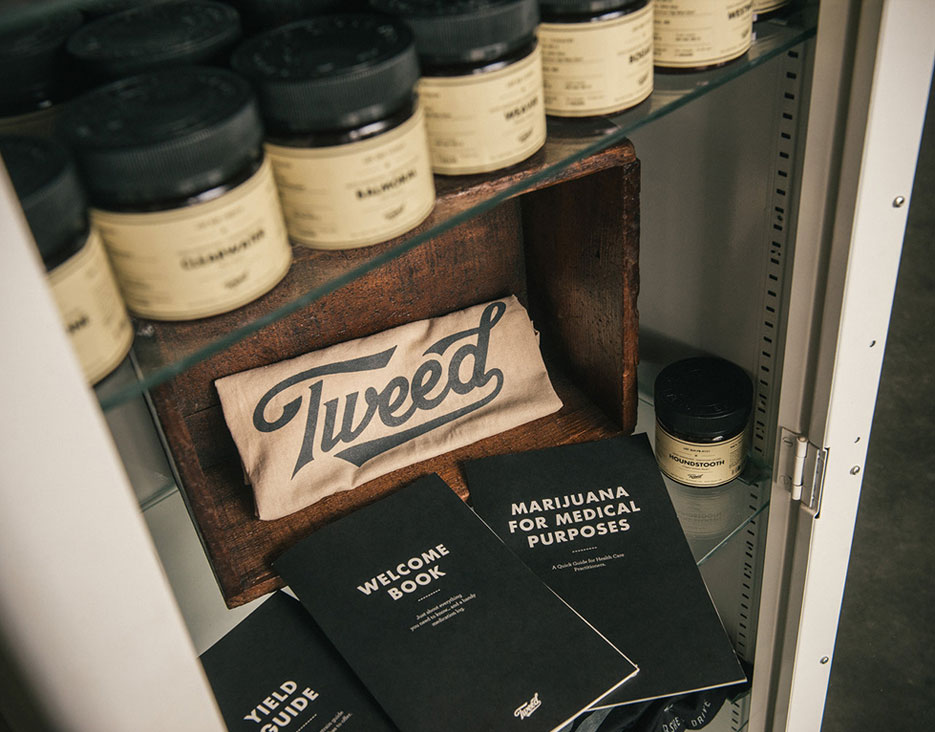
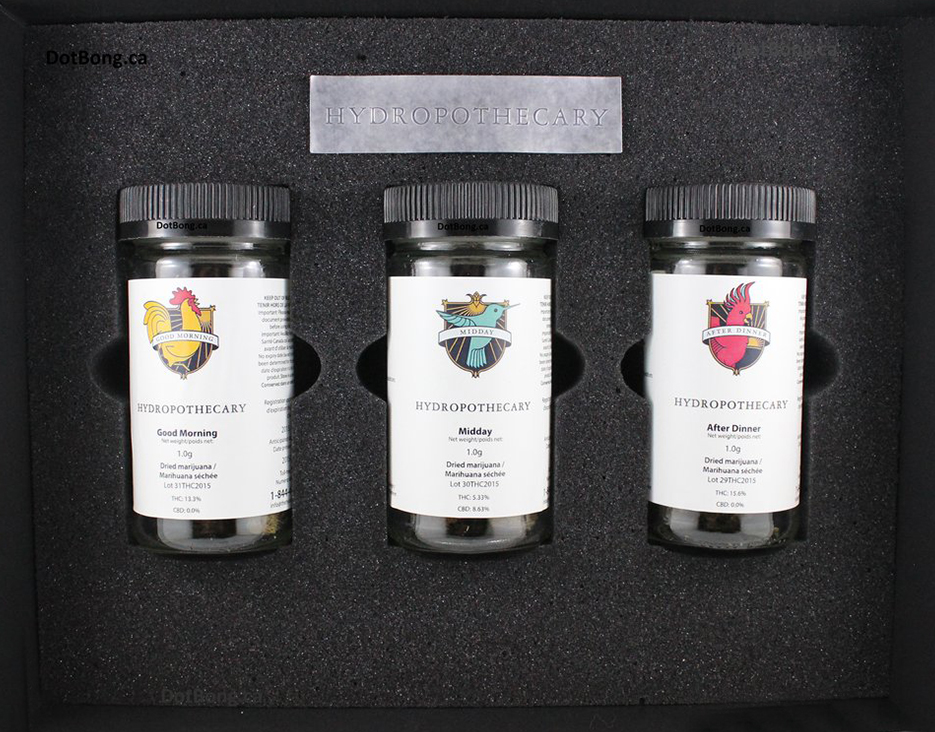
Canadian Craft Cannabis
Of course, cannabis production in Canada didn’t start with the legalization of medical cannabis in 2001. Long before medical use legitimized cannabis production, British Columbia in particular had already developed a reputation for producing some of the best cannabis worldwide. Now that legalization appears to be a reality, the black market producers who are largely responsible for building the ‘BC Bud’ brand are standing in opposition to the Licensed Producers. Portraying licensed producers as ‘homogeneous and commercial’, many underground cultivators seek to differentiate themselves from LPs by conveying an aspect of ‘craft’ production, often focusing on the fact that their plants are truly sun grown rather than grown in enclosed indoor spaces. A number of lobbying groupshave formed around the Craft Cannabis concept, and its adherents have successfully taken control of the term in Western Canada. As it isn’t focused solely on the medicinal market, branding for Craft Cannabis will most likely take cues from other specialty sectors like organic farming and craft brewing, and will almost certainly incorporate a larger lifestyle element than that of the Licensed Producers.

As shown in the examples below, other industries that promote the concept of ‘craft’ tend to contrast historical influences with modern execution. Craft production methods often involve reviving old techniques and looking at them from a contemporary perspective, so this approach to packaging makes perfect sense. Additionally, these products are often produced using materials that create an organic, handmade feel.
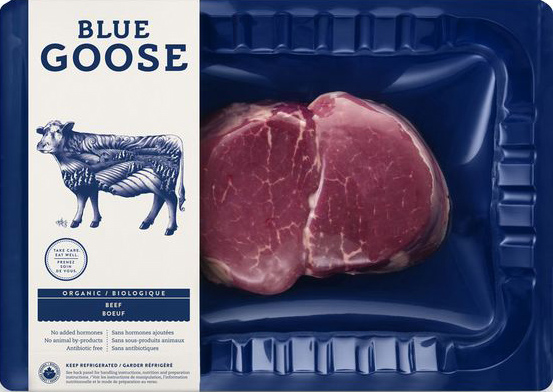
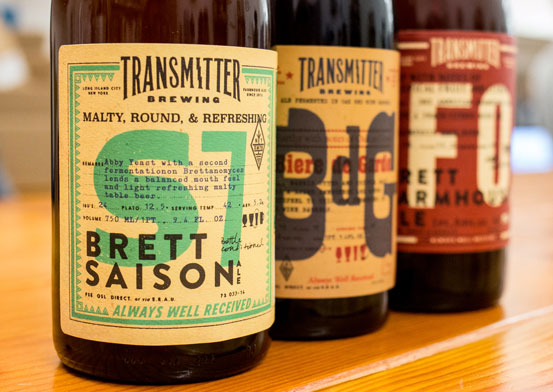

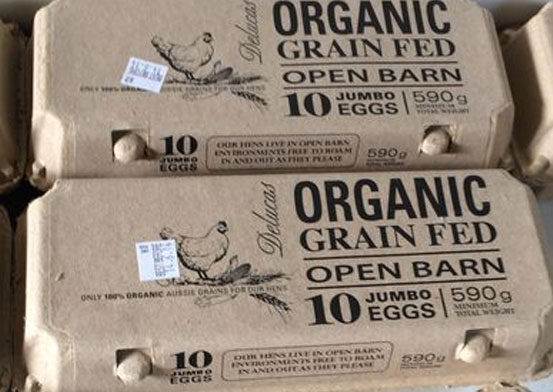
Looking Forward: Concentrates & CBD
Since the mainstreaming of cannabis began in the early 2000s, one of the most vigorous areas of development and experimentation has been concentrates, distillates, and other refined cannabis products. Like the cannabis sector as a whole, these products are usually developed with either a medicinal or recreational consumer in mind, with less crossover between the two than in the general cannabis space. Taking a closer look, there are two product categories where I think we’ll see the most exciting new ideas emerge.
On the medicinal side, recent findings about the effectiveness of CBD (cannabidiol) to treat inflammation, pain, seizures, and more has led to the popularization of low-THC/high-CBD strains. As CBD has been shown to be effective in treating more extreme symptoms of diseases like epilepsy and Parkinson’s, inhalation may not be the preferred ingestion method for some patients. Additionally, as CBD is non-psychoactive, it has been investigated as a treatment for children. These factors have led to the development of a number of concentrated carriers for CBD, including tinctures, topical creams, gelcaps, and sublingual drops. However, in its most basic form, CBD concentrate is indistinguishable from THC concentrate and the two are found alongside each other quite often. This is a perfect opportunity to differentiate similar products with entirely different consumers through the use of well-considered design and packaging.
For example, a CBD capsule intended for therapeutic use would be a natural candidate for austere, pharmacy-grade packaging (left image), whereas a high-THC concentrate could be packaged in a far more informal, eye-catching manner (right image).

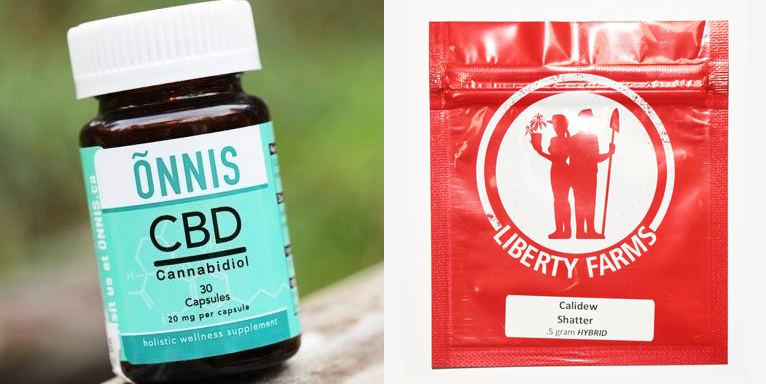
On the recreational side, cannabis concentrates (shatter/wax/oils) have been steadily growing in popularity over the last few years. As you can see below, these products are physically quite different from dried cannabis and they tend to be packaged in small vials, envelopes, and syringes that leave little room for information or design. Some producers, including the red Liberty Farms packaging above, have started to place these primary containers within a secondary shelf package to allow more real estate on the package for branding. Interestingly, recreational concentrate makers have already begun to differentiate their products through the addition of logos and iconography. As all concentrates look effectively the same (unlike dried cannabis, where quality can at least be partially determined visually), branding is often featured prominently in catalog and promotional images to act as a ‘seal of quality’. Moving forward, the top end of this sector may begin to take cues from the craft spirits category, where more refined products have historically been manufactured with a higher production value and presented in more ornate containers.
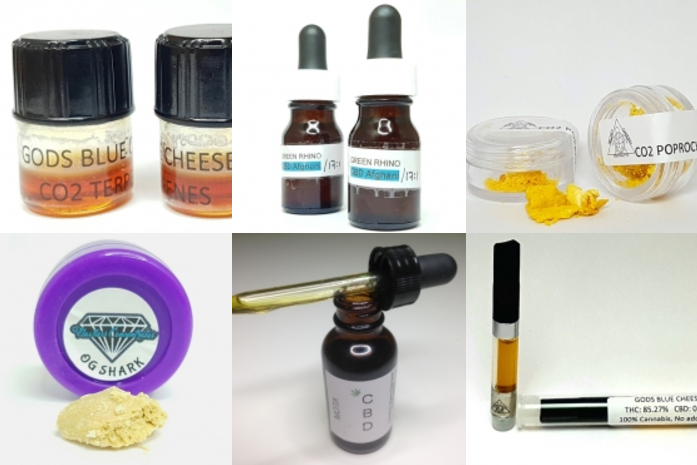

Below are a few standout examples of top shelf packaging from the United States, where cannabis has already been legalized in some states. In each case special processes like foil stamping, embossing, and special substrates have been combined to create a memorable impression. Bloom Farms (top right, bottom left) is the best example of how a considered combination of substrates, surface effects, and restrained design language can come together to create an ownable and consistent branding and packaging approach.
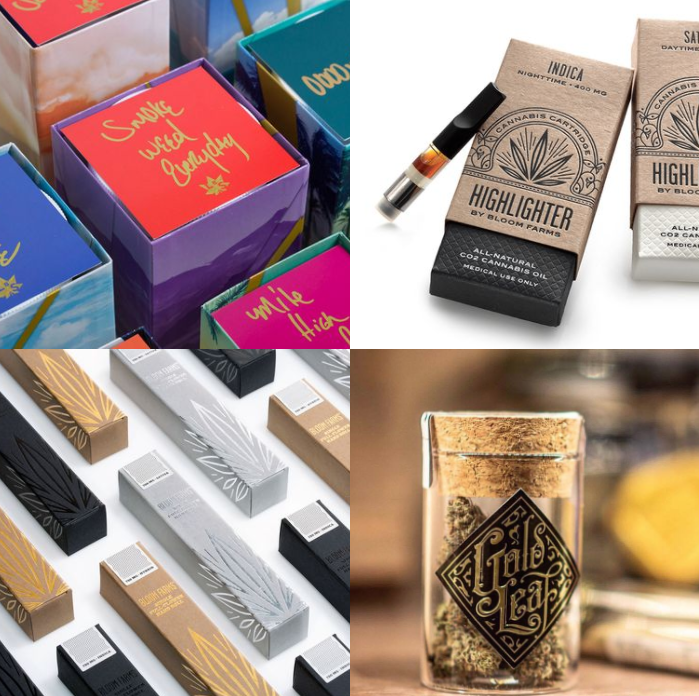
So, as you can see from our discussion above cannabis branding in Canada is essentially at a crossroads. For over 15 years Canadian cannabis producers have been investing heavily in pharmacy-style branding and packaging, however in order to compete in the much larger recreational market brands will need to take a more lifestyle-centered approach to appeal to non-medicinal users. Recreational legalization will also require currently operating ‘grey market’ dispensaries to upgrade to retail-appropriate packaging. Cannabis is currently the only retail sector where packaging standards don’t exist, and many customers are still accustomed to having their purchases packaged in a ziploc bag and labeled with a Sharpie. If the development of alcohol branding and packaging since the repeal of prohibition is any indication, cannabis could become another product where branding and packaging are central to retail success.
– THE END –
INQUIRE
Careers
[email protected]
+1 604 910 7160
- By Appointment Only
15b Commercial St.
Nanaimo, BC
Canada, V9R 5G3
NEWSLETTER
FINEPRINT

